Streaming Science History
One hundred historical videos and films from the Othmer Library are now available online!
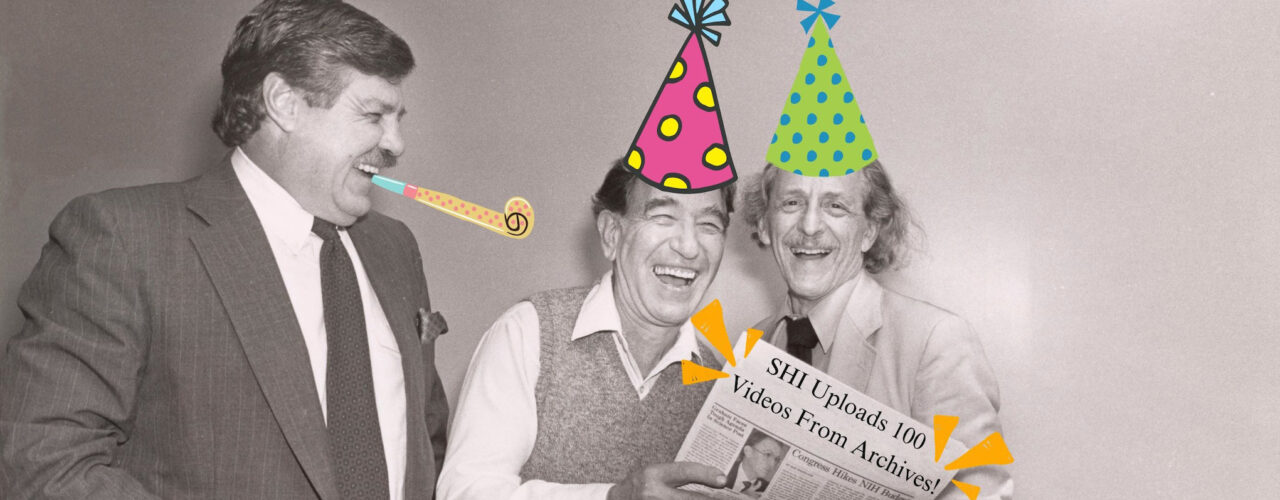
One hundred historical videos and films from the Othmer Library are now available online!
I firmly believe that more people should celebrate small victories and milestones. Did you finally nail your sourdough recipe? Make that phone call you’ve been dreading? Clear your processing backlog? (That one’s a little joke for the archivists reading this). All of these justify pausing to pat yourself on the back and maybe have a treat of your choice.
So I’d like for us all to celebrate the fact that the Science History Institute’s Othmer Library now has 100 videos available for you to watch in our digital collections!
Our library’s archives hold 400 DVDs, nearly 400 VHS tapes, over 300 16mm film reels, just over 200 U-matic tapes, and a smattering of other formats like Betacam, 1” open reel video, 2” quad video, 35mm film, 8mm film, and DV and mini DV tapes. These materials include lectures by scientists, promotional videos for companies and professional organizations, conference proceedings, educational films, footage of experiments, and even some family home movies. These moving image items represent a whole host of genres and topics, not to mention unique preservation and digitization challenges!
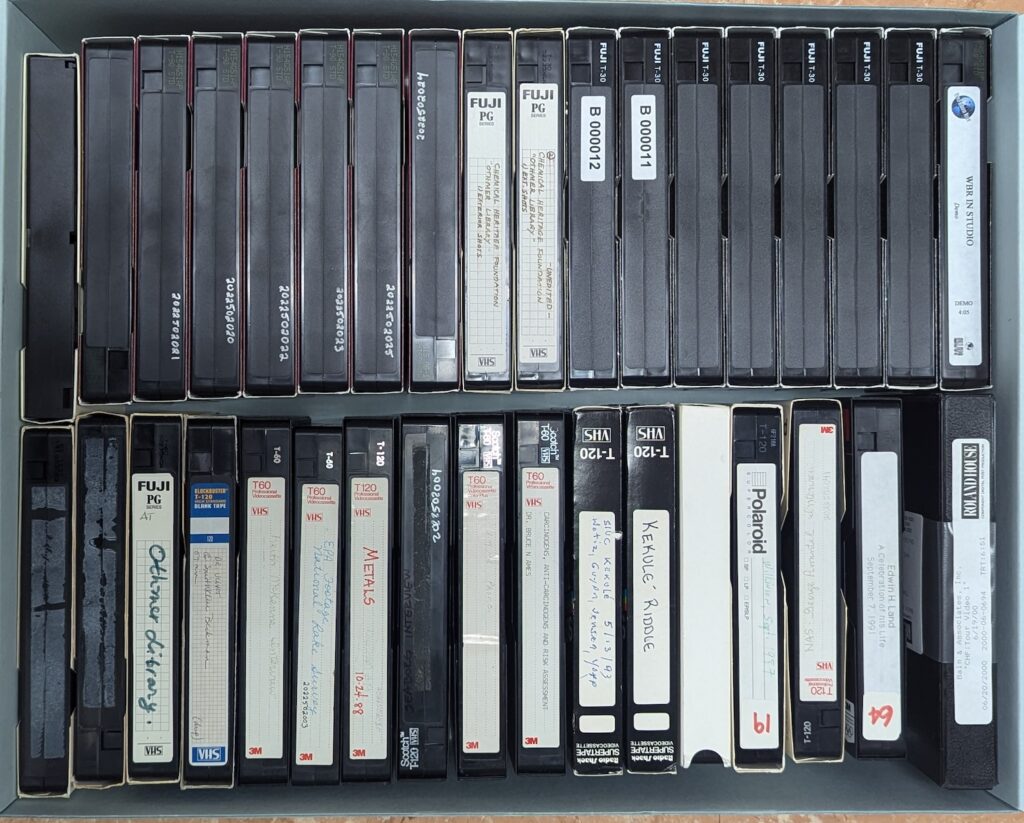
Getting to 100 has taken literal years and many hours of labor from Othmer Library staff. When I was hired as the digital preservation archivist at the Institute in 2021, we had neither the technological means to put video files into our digital collections, nor the ability to digitize VHS cassette tapes on our own. We’d previously been sending them out to an external vendor, but we wanted to be able to digitize VHS materials in-house to reduce our costs and offer faster turnaround times for researchers interested in our archival videos.
So I spent about a year purchasing hardware (a good quality VCR, a few different analog-to-digital converters, many different cables, and a time base corrector) and testing out software (VirtualDub, OBS, Vrecord, VLC, Handbrake, Adobe Premiere, and probably others I’ve forgotten) in order to play, capture, transcode, and edit our videos.
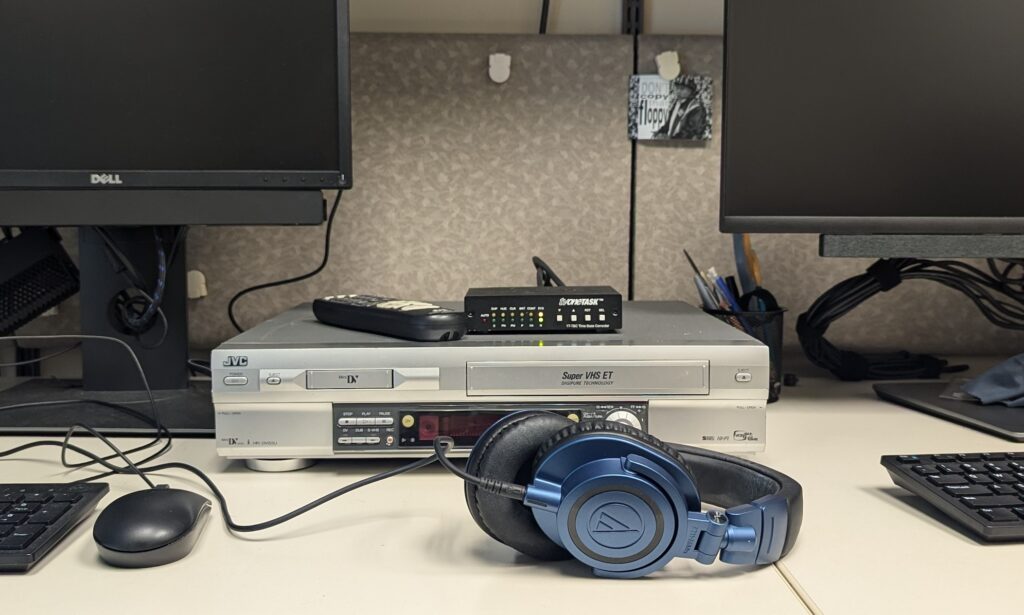
Once I had a combination of hardware and software that worked together, I had to create standards for our video files, ensuring that our digitization would be consistent and had the best chance to still be accessible in 10, 20, or 50 years. And this was tricky: Experts and archivists agree on some but not all technical standards for video preservation. So I had to make a lot of decisions about what was best for us here at the Institute and our particular videos, technology set-up, and researchers.
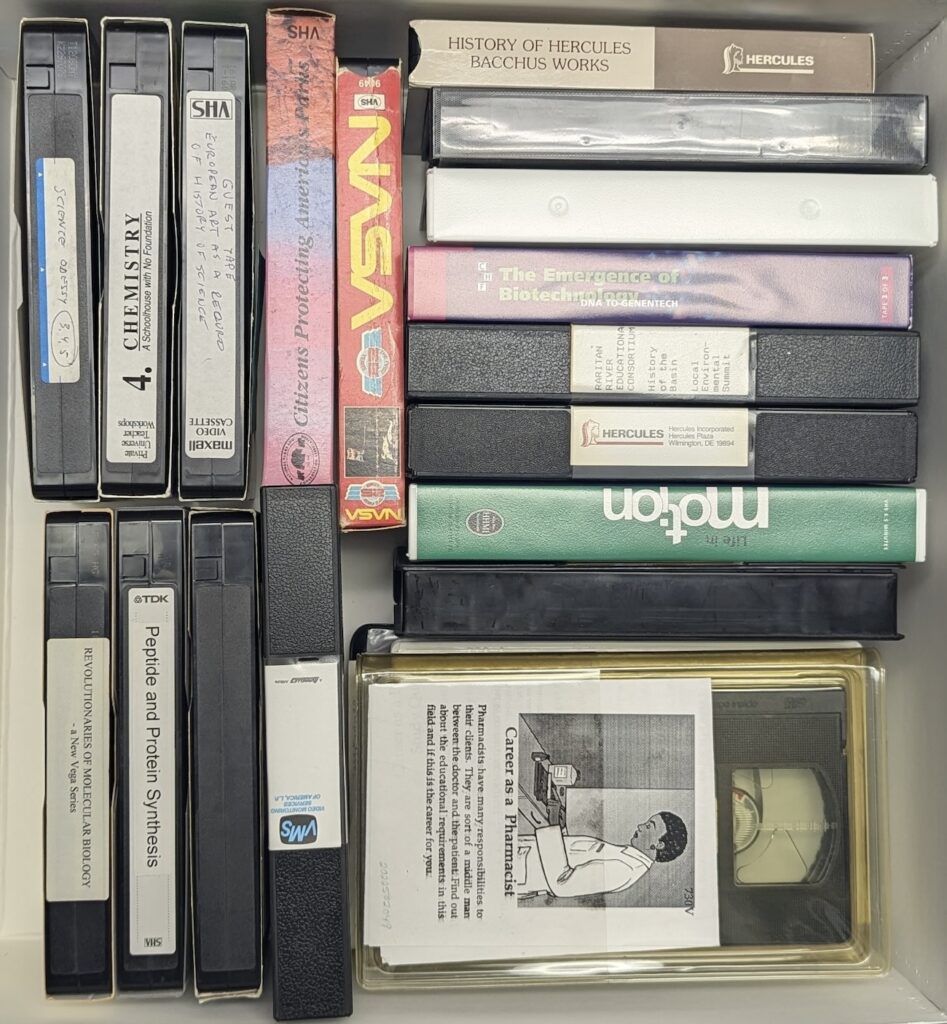
Once those decisions were made, the brilliant developers behind our digital collections, Eddie Rubeiz and Jonathan Rochkind, had to build in the ability to actually play videos for our users. Because we have a “homebrew” digital asset management system (i.e., built from scratch), every new feature that we add must be painstakingly coded and integrated with all the interdependent bits and pieces that make the digital collections go.
By the spring of 2022, we officially had videos from our archives online for people to view!
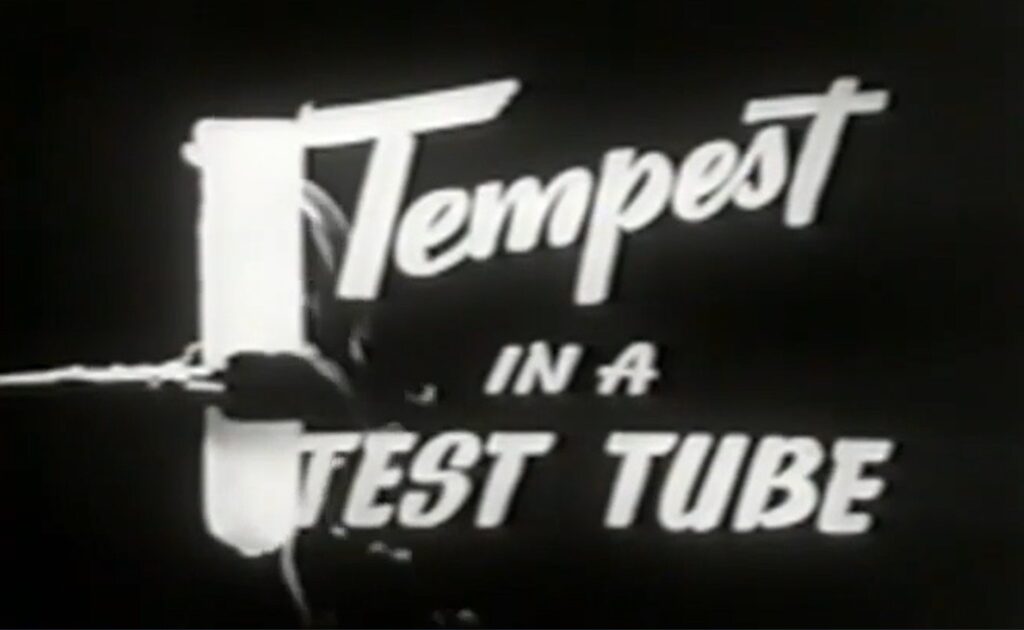
The very first video I uploaded was Radioactivity and the Parts of an Atom, an educational video originally filmed in the 1950s to teach high school students about science. This one has a 1980s introduction from the host, Dr. Harry Sello, in which he points out how safety standards have changed, implying that maybe he shouldn’t have handled radioactive materials so casually.
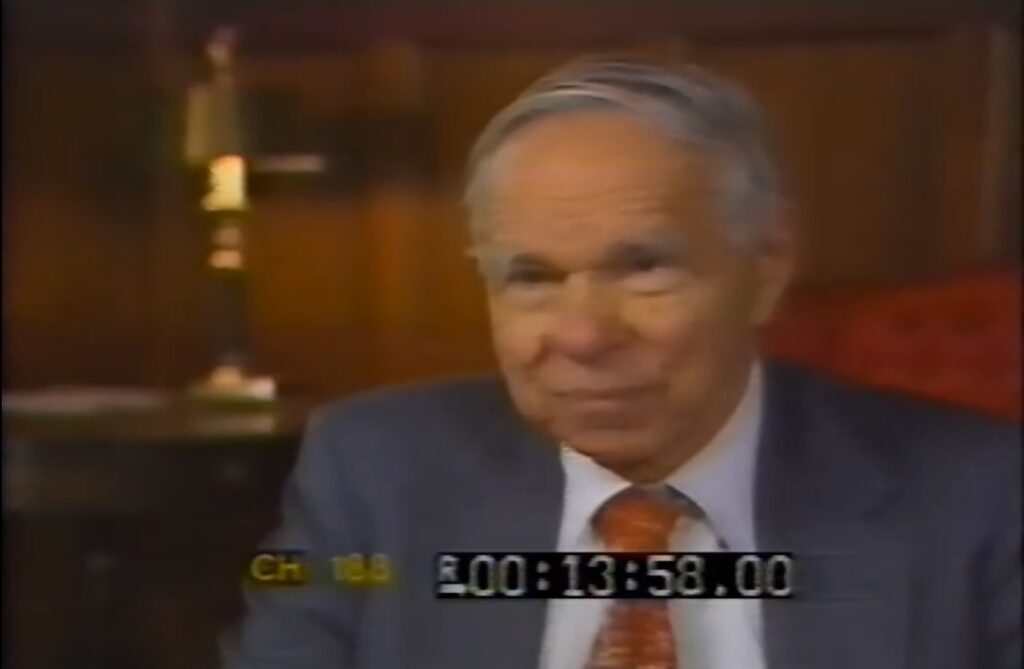
The 100th video uploaded is raw footage of an interview with Glenn Seaborg, a U.S. chemist and winner of the 1951 Nobel Prize in Chemistry for his work on transuranium elements.
This tape is fairly typical of our videos in that the image has already degraded over time and we don’t know a whole lot about how it was created. The tape is labeled simply “Seaborg interview,” which doesn’t tell us the things we really want to know, like who conducted the interview, why it was filmed, and who owns the copyright.
Nevertheless, it remains a fantastic archival document because it is raw footage: You get to see one of the most celebrated chemists of our time in some unguarded, more casual moments, like being annoyed at the airplanes passing overhead that interrupted his interview and showing off his chemistry necktie.
Nobel Prize-winning scientists . . . they’re just like us!
Between videos 1 and 100, there was a lot of history, education, humor, and of course, science! To celebrate our video milestone, I made a short compilation of some of my favorite moments from our digitized film and video. I hope you enjoy and click through to see the full videos in our online collections, linked below the compilation.
Works in the compilation:
Featured image: Roland Holub, Stanley Cohen, and Eugene Garfield celebrating the Science History Institute’s 100th historical video being added online!
Unwrapping the mystery of a Styrofoam Santa in our collections.
New World ingredients in Old World dyes.
How a Jewish scientist’s intellectual property became a lifeline in his journey from Nazi Europe to the United States.
Copy the above HTML to republish this content. We have formatted the material to follow our guidelines, which include our credit requirements. Please review our full list of guidelines for more information. By republishing this content, you agree to our republication requirements.